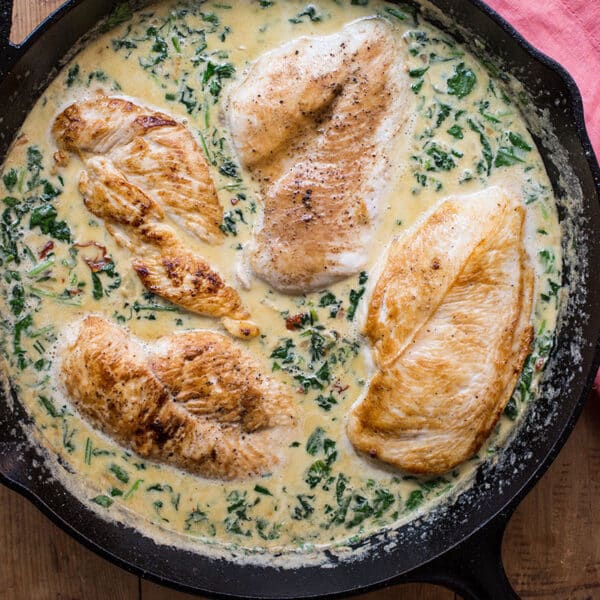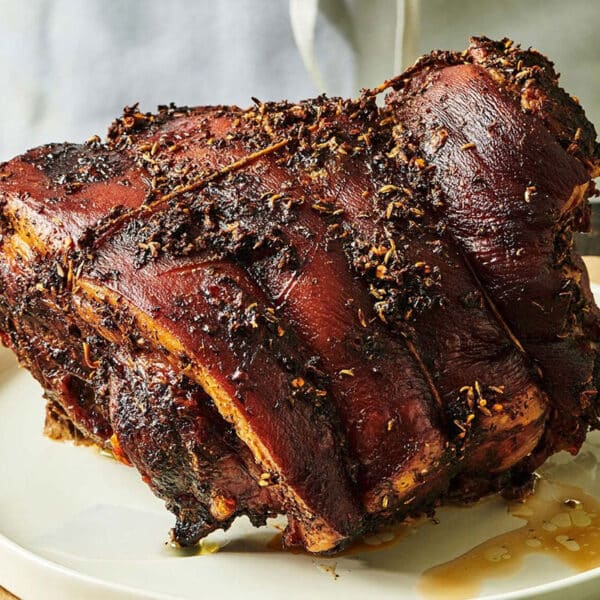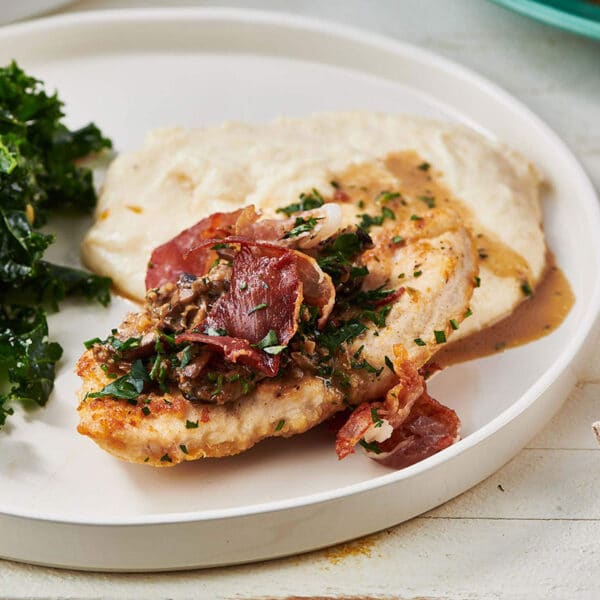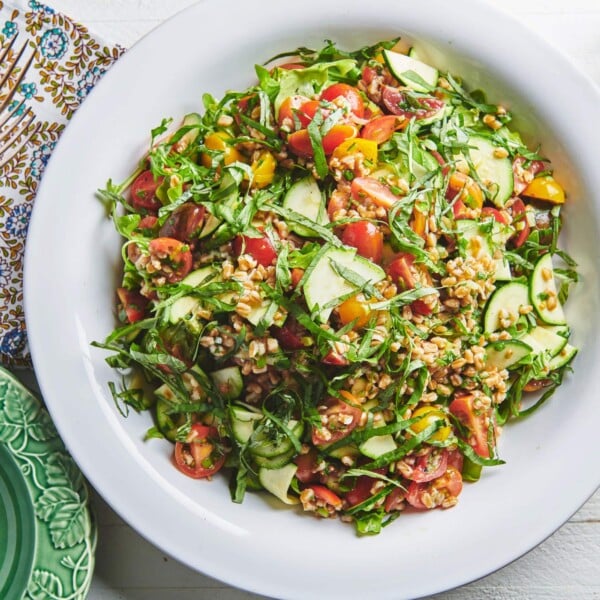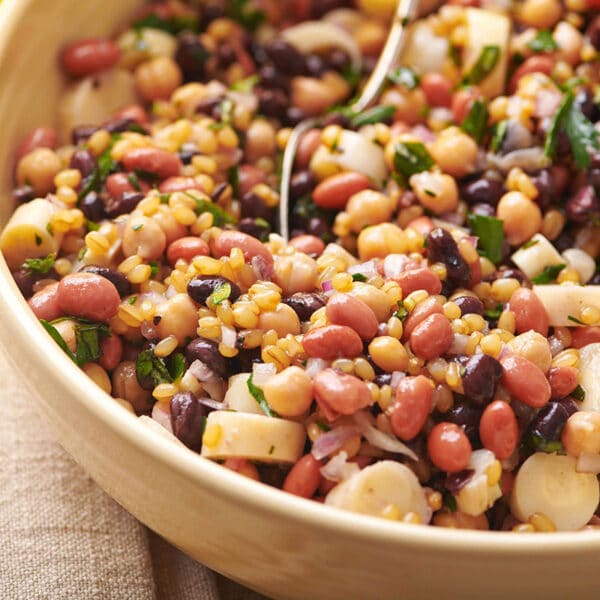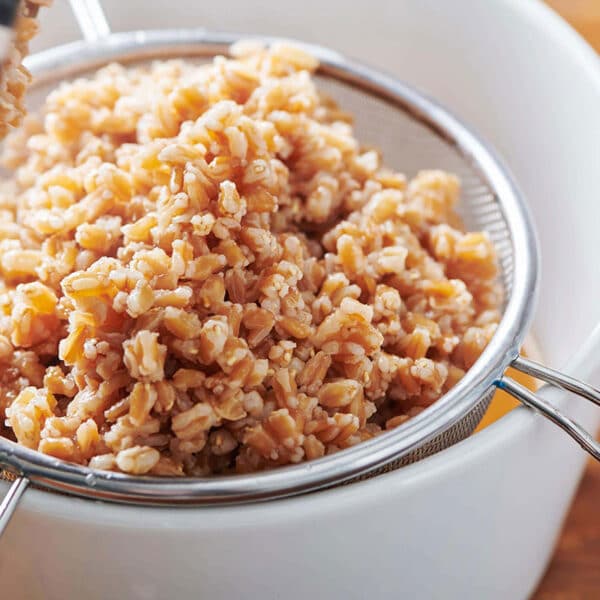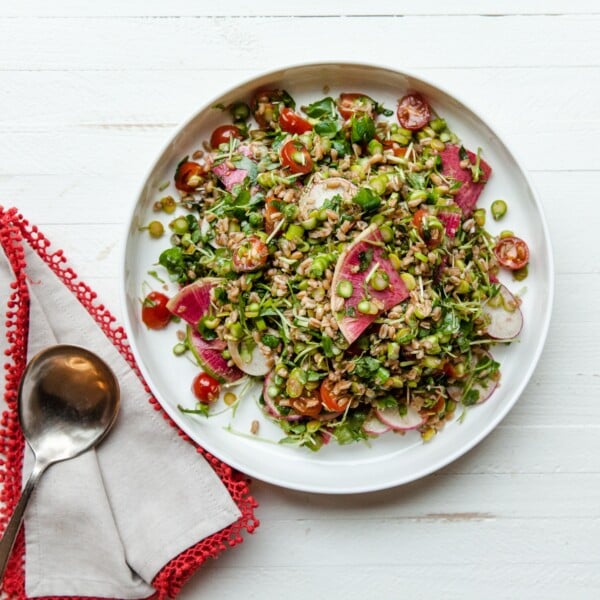Farrotto
on Oct 27, 2019, Updated Apr 15, 2025
This post may contain affiliate links. Please read our disclosure policy.
Similar to risotto, but made with the whole grain, farro. Roasted golden beets and crispy shallots make farrotto even better!
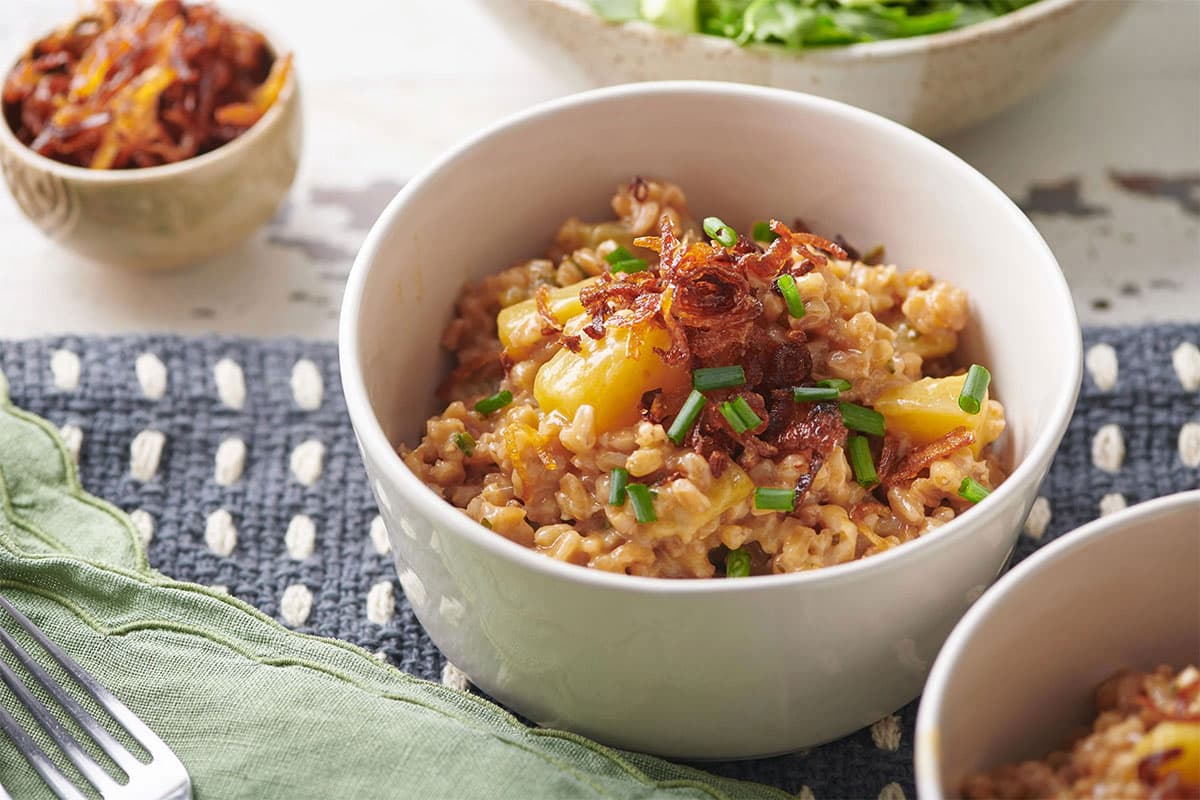
If you are a fan of risotto, then you are going to love this. Farrotto is essentially risotto (or farro risotto), but instead of being made with short-grain rice (like arborio), it’s made with farro. Using farro means that this creamy whole-grain vegetarian dish packs even more fiber and protein than regular risotto. Glowing yellow or golden beets and bright green herbs give this farrotto recipe vibrant flavor and color.
Farrotto can make a perfect side dish served with Garlicky Pork Chops and Broccoli or Silver Palate Chicken Marbella. Or a great main course with a Cherry Tomato Antipasti Salad or an Arugula, Orange, and Pomegranate Salad.
By signing up, you agree to our Privacy Policy.
What's In This Post?
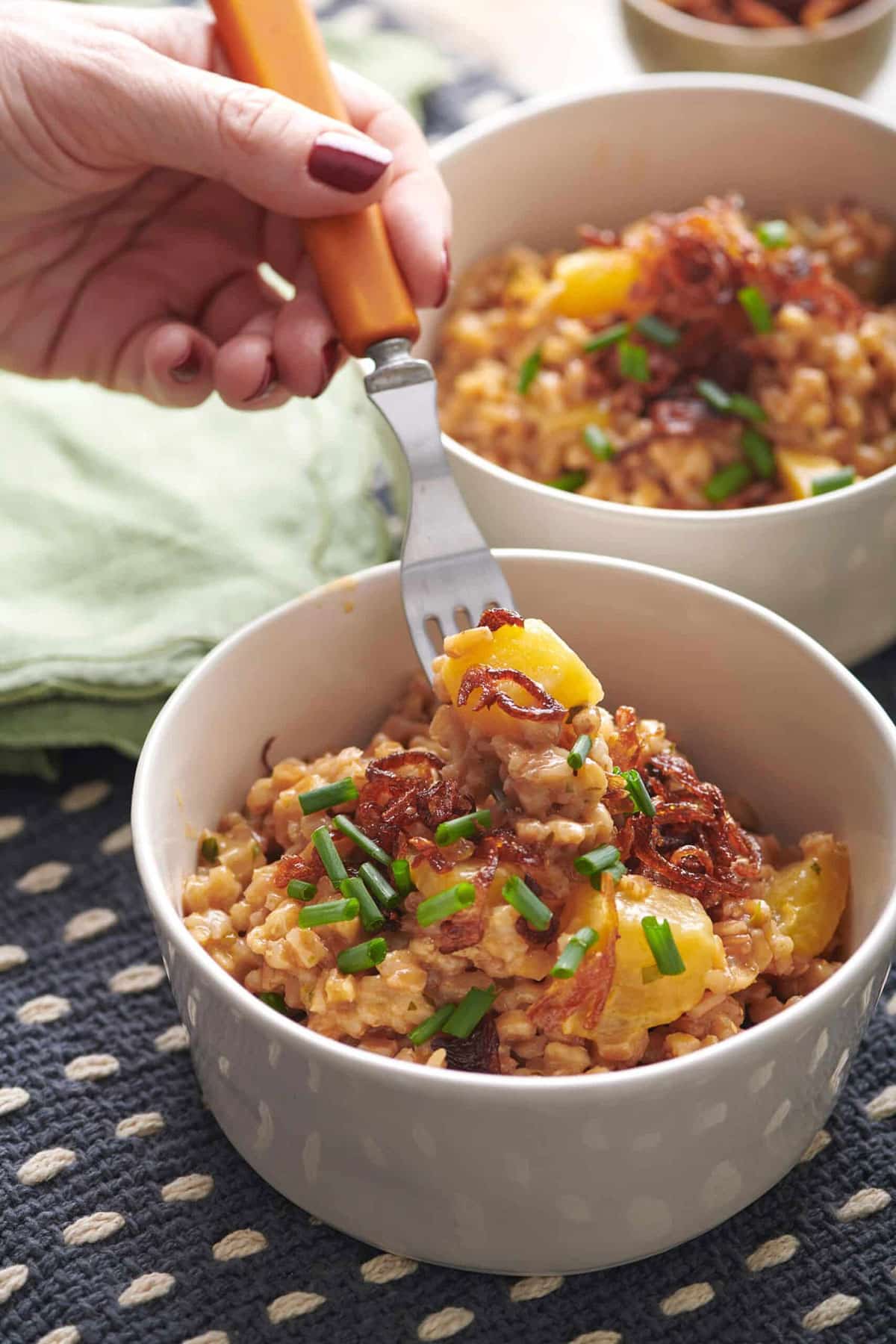
Farrotto: A terrific change of pace from risotto, packed with whole grain nutrition, but just as satisfyingly delicious.
What Is Farro?
Farro is an ancient whole grain that can be used in everything from soups to casseroles to warm sides to room-temperature salads. It’s a hearty wheat grain with a chewy texture, and it’s a good source of iron, fiber, and protein.
Farro’s nutritional value makes it an excellent grain to incorporate into all kinds of dishes, particularly for vegetarians. You can play around with it in recipes that might call for barley, wheat berries, or brown rice.
Kitchen Smarts
Read for more about how to cook farro beyond farrotto.
Where to get Farro
One of the best and largest sources of whole-grain products in the world is Bob’s Red Mill. They make flours, cereals, seeds, baking mixes, grains, and more, and if you’ve ever bought even one whole grain, I’m guessing there’s a good chance you bought one from Bob’s Red Mill – they are available everywhere, and they are beloved. Their farro is a pantry staple for me. It’s organic, and it cooks up nutty and chewy, and I use it all the time.
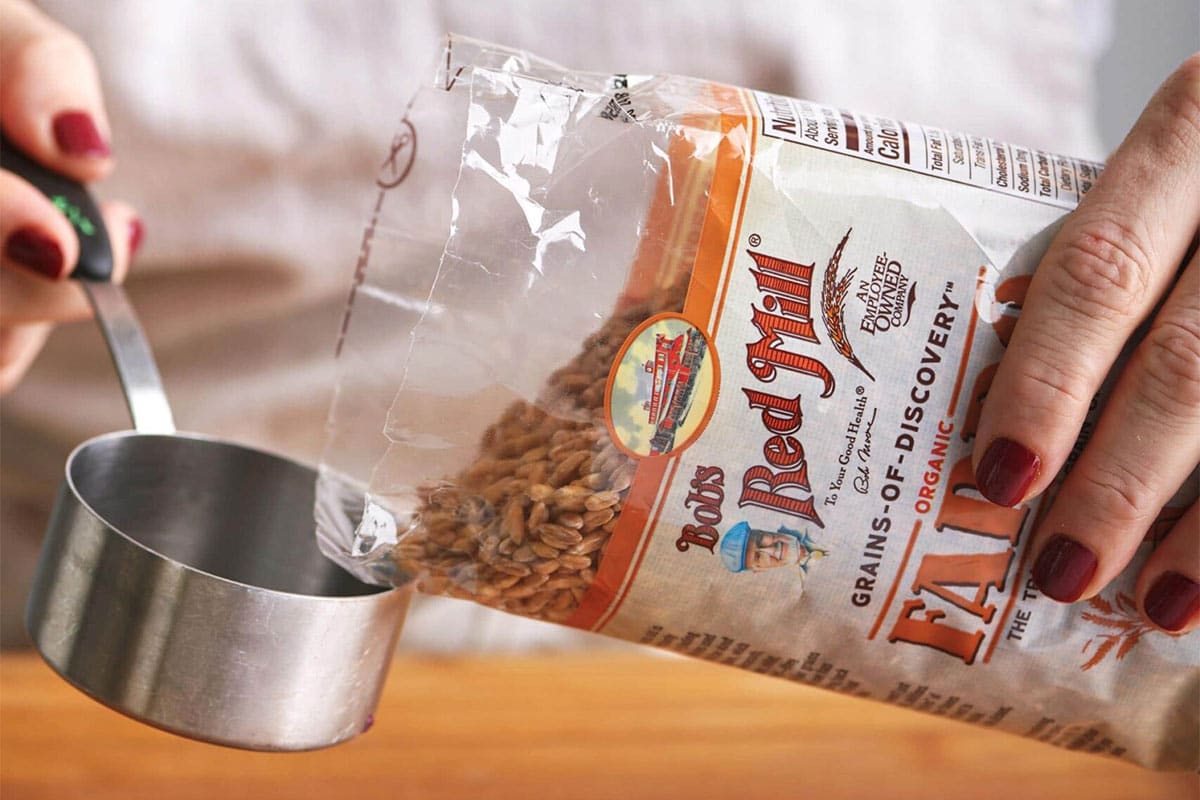
Ingredients
- Farro – I like using Bob’s Red Mill farro.
- Golden beets – You can also always use red beets, but just know it will color your Farrotto red.
- Unsalted butter – For a rich flavor and a silky texture.
- Onions – You can use red or yellow onions.
- Vegetable stock – For more depth of flavor. Preferably, use less-sodium vegetable stock, then add salt to taste.
- Dry white wine – Elevates the flavor.
- Parmesan cheese – Please use freshly grated Parmesan.
- Tarragon – For earthy, sweet, and bitter notes.
- Heavy cream – Optional, but will add a lot of richness.
- Crispy fried shallots and chopped chives – For an optional garnish.
Variations
If you are looking for a vegan version of this Farrotto, use oil instead of butter and skip the Parmesan and cream.
How to Make Farrotto
- Cook the beets: Place the beets on top of foil, sprinkle with oil, salt, and pepper, and then wrap it like a package. Bake the beets for about 40-50 minutes at 375 degrees F. Once the beets have cooled, remove the skins and dice them into cubes.
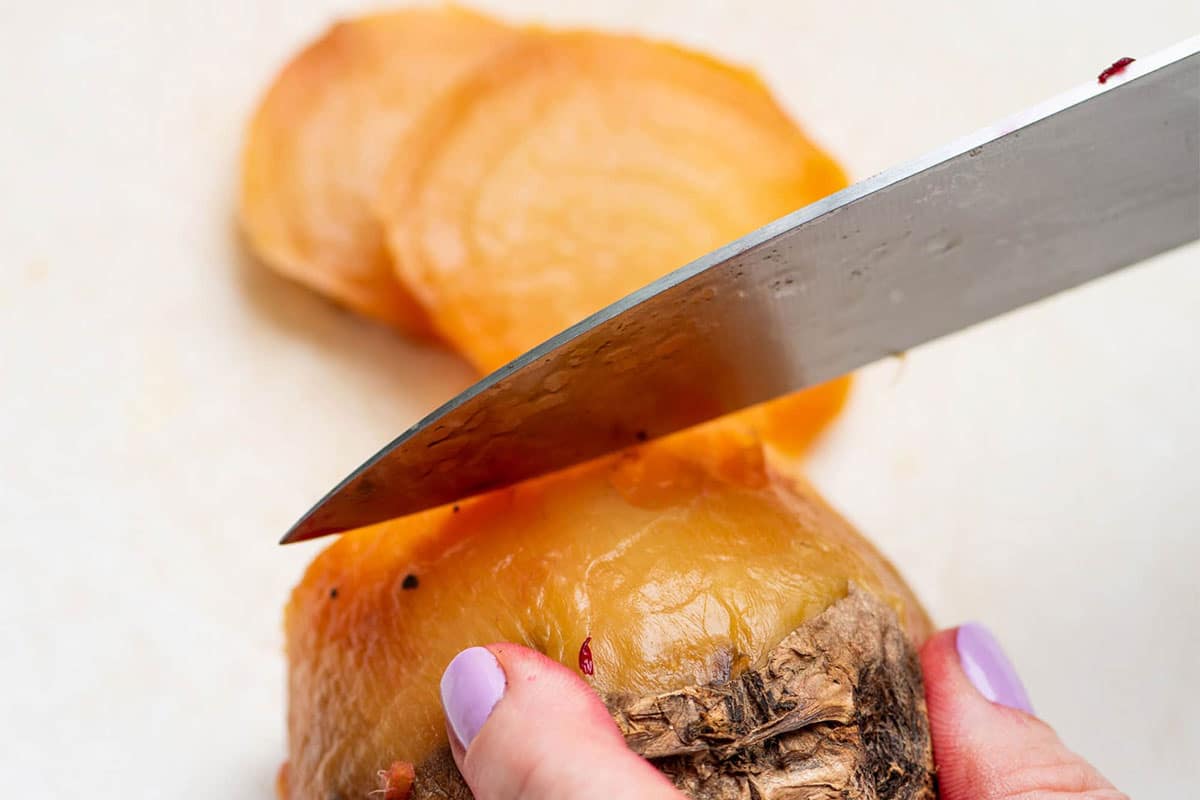
- Warm the vegetable broth: In a small saucepan, warm the vegetable broth just until hot.
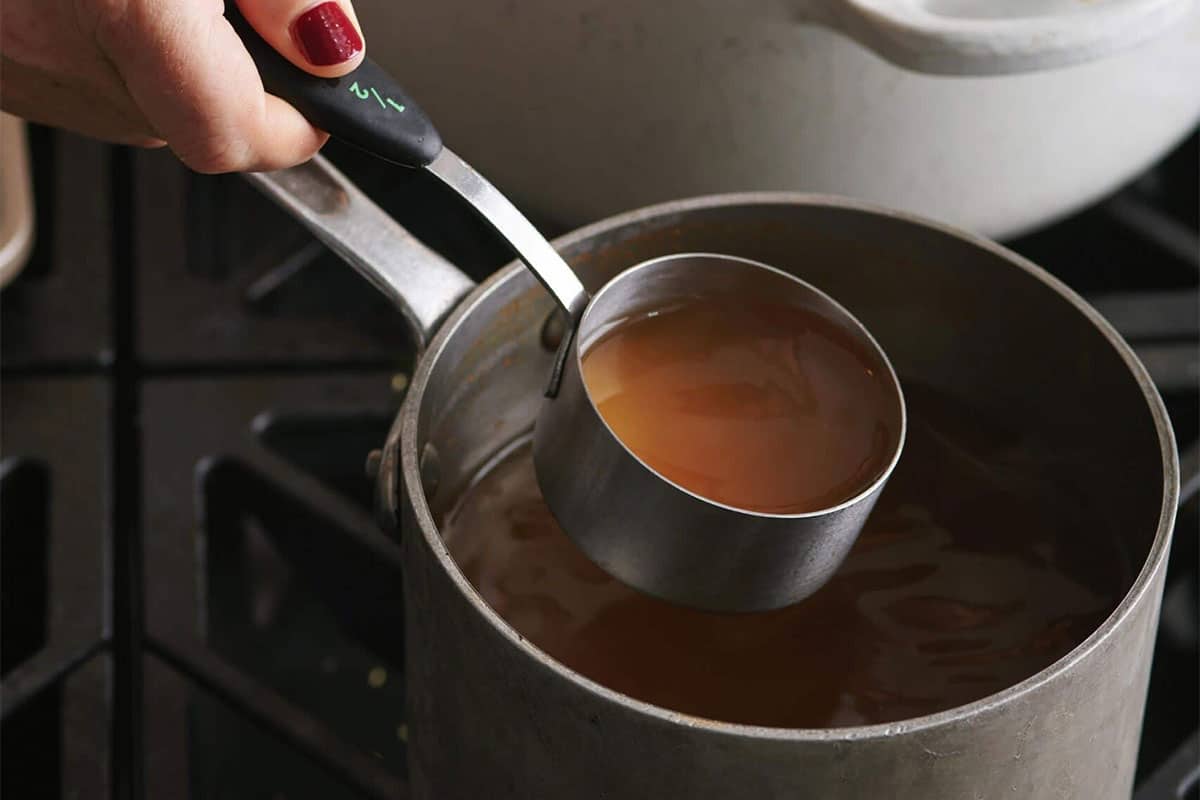
- Cook the onions and farro: In a large heavy saucepan or Dutch oven, melt the butter over medium heat. Sauté the onion until soft and lightly golden. Add the farro to the pot and cook, stirring until all of the grains are nicely coated with the butter.
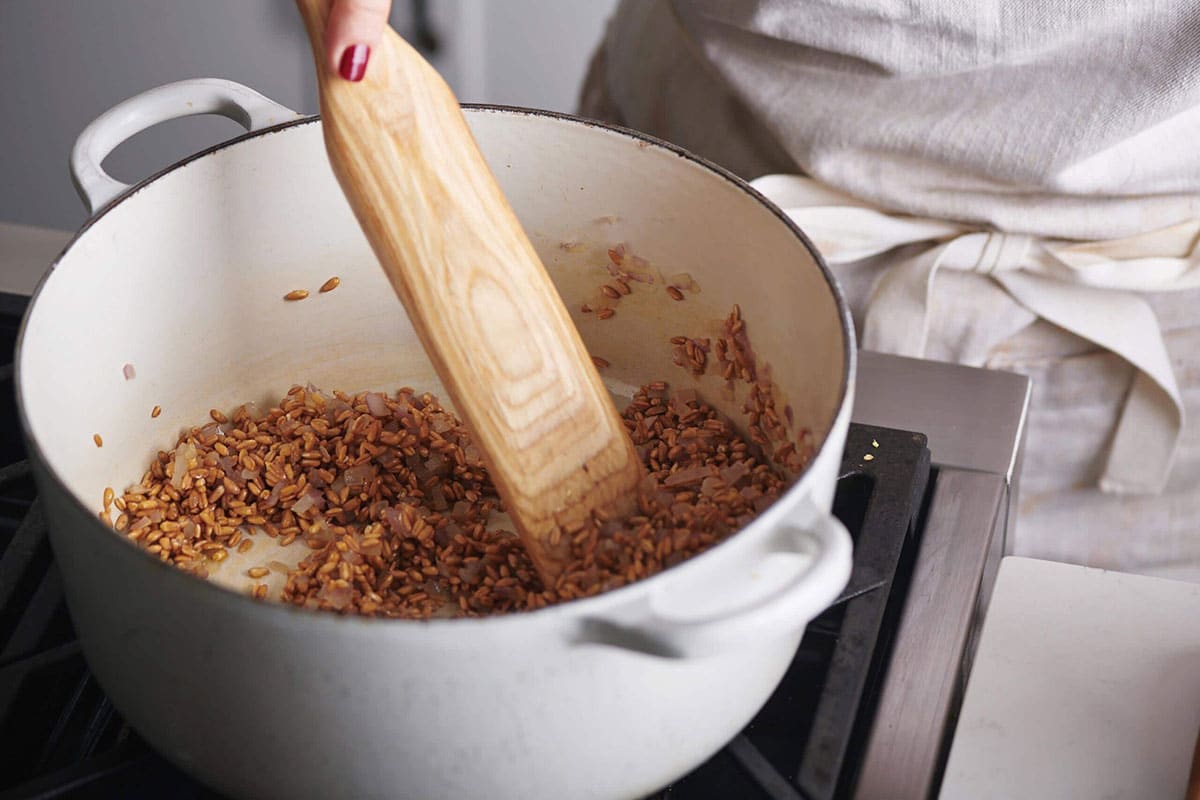
- Add the wine and stock: Turn up the heat to medium-high, add the wine, bring it to a simmer, and cook until the wine is almost all absorbed. Add one cup of vegetable stock at a time, stirring every couple of minutes and letting each cup of stock absorb almost completely before adding more. Season with salt and pepper as needed.
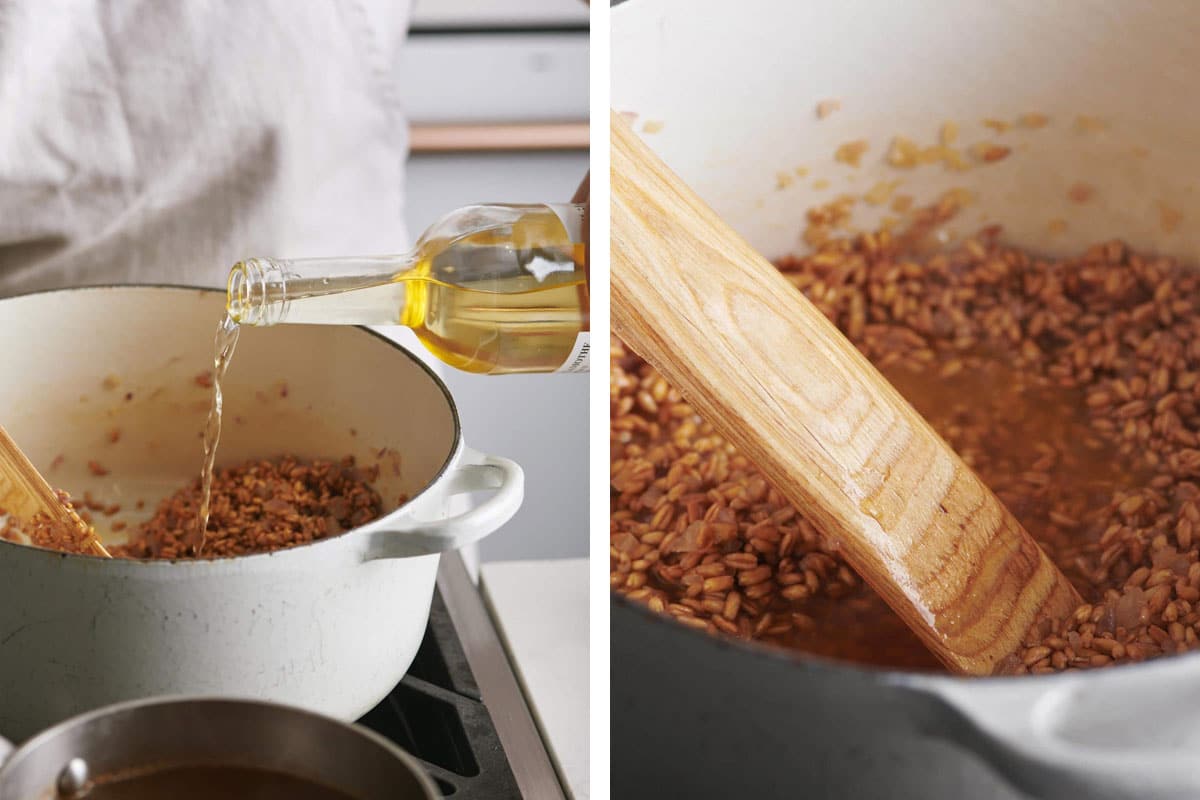
- Add the beets and remaining ingredients: Just before the grains finish cooking, stir in the beets, then the cheese, remaining butter, herbs, and cream.

- Garnish and serve: Garnish with the fried shallots and chives and serve immediately.

Serving Size
If you are serving this as a side dish, it will serve 6 servings, but if you are serving it as a main course, plan for 4 servings.
Make Ahead and Storage
This is a great dish to make ahead, as the flavors will get more complex as it sits. Store in an airtight container in the fridge for up to 1 week. You can reheat it on the stove or in the microwave.
What to Serve With Farrotto

More Farro Recipes
- Get essential tips for how to cook perfect farro on the stove every time.
- A hearty vegan dish, the Farro and Vegetable Salad is great for potlucks and picnics.
- The Summer Whole Grain and Vegetable Salad recipe is great with farro (or barley) and makes use of summer’s best produce.
Pin this now to find it later
Pin It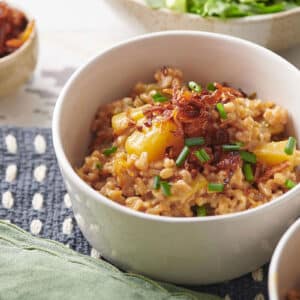
Farrotto
Ingredients
- 6 small golden beets (about 2-inches in diameter, trimmed and scrubbed)
- 1 tablespoon olive oil
- Kosher salt and freshly ground black pepper (to taste)
- 2 tablespoons unsalted butter (divided)
- ¾ cup chopped red or yellow onions
- 6 cups vegetable stock
- 1 ½ cups farro
- 1 cup dry white wine
- ¼ cup freshly grated Parmesan
- 2 tablespoons roughly chopped tarragon
- 1 to 2 tablespoons heavy cream (optional)
To Garnish
- Crispy Fried Shallots
- Snipped fresh chives
Instructions
- Preheat the oven to 375 F.
- Lay a large piece of foil on a rimmed baking sheet, leaving half the foil hanging off one end. Place the beets on top of the foil on the baking sheet. Sprinkle the beets with 1 tablespoon of olive oil and season with salt and pepper. Fold the foil in half to make a packet and crimp the edges.
- Bake until the beets are tender, about 40 to 50 minutes, depending on the size of the beets). You can check by piercing a fork through the foil and see when they are tender. Let them cool in the foil packets.
- When the beets are cool enough to touch, remove them from the packet and peel off the skins. Dice the beets into 1/2-inch cubes and set aside.
- Heat the vegetable broth in a medium-sized saucepan just until hot. Meanwhile, in a large heavy saucepan or Dutch oven, heat 1 tablespoon of the butter over medium heat until melted. Add the onion and sauté for 5 minutes until soft and lightly golden. Add the farro to the pot with the onions and cook, stirring until all of the grains are nicely coated with the butter.
- Turn up the heat to medium-high, add the wine, bring it to a simmer, and cook, stirring frequently, until the wine is almost all absorbed.
- Add the stock one cup at a time, stirring every couple of minutes and letting each cup of stock absorb almost completely before adding more. Adjust the heat as needed so that the liquid stays barely simmering. Taste towards the end to see when the grains are becoming cooked and tender (the farro should take about 30 to 35 minutes in all to cook, depending on how al dente or tender you like it to be), and season with salt and pepper as needed. You will likely not need to use all of the broth.
- Just before the grains finish cooking, stir in the beets. When the grains are tender and the liquid is mostly absorbed, stir in the cheese, the remaining tablespoon of butter, the herbs, and the cream, if desired, and serve immediately, garnished with the fried shallots.
Notes
- If you are serving this as a side dish, it will serve 6 servings, but if you are serving it as a main course, plan for 4 servings.
- This is a great dish to make ahead, as the flavors will get more complex as it sits. Store in an airtight container in the fridge for up to 1 week. You can reheat it on the stove or in the microwave.
